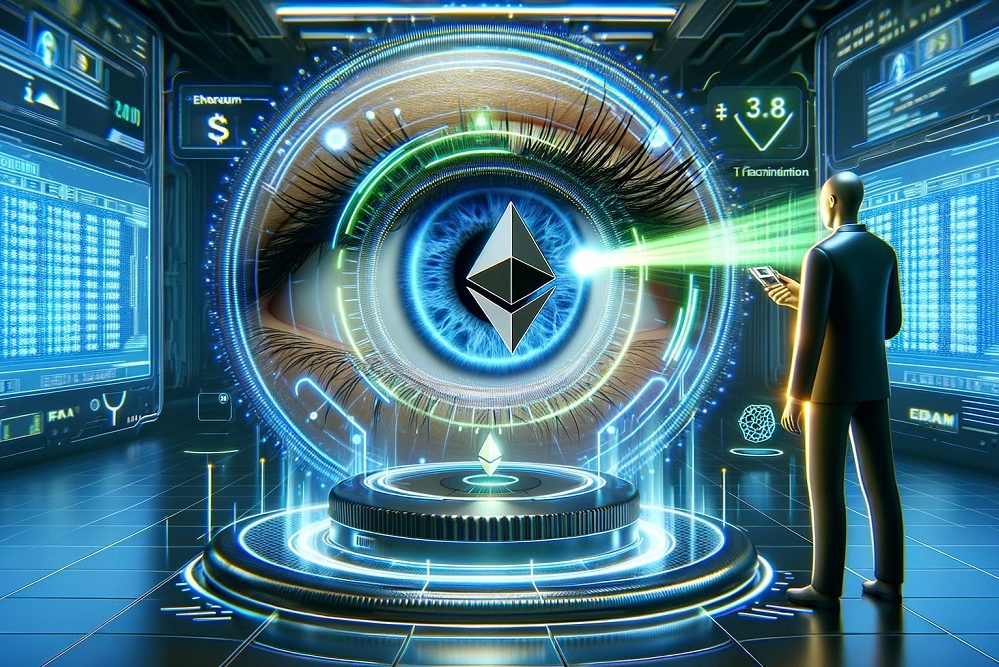OpenAI founder Sam Altman’s blockchain project, Worldcoin, which incorporates retina-scanning technology, is preparing to launch its own blockchain named World Chain. This layer-2 network built on Ethereum is set to debut this summer, offering users who undergo retina scans a digital passport called “World ID”.
The introduction of this new blockchain aligns with Worldcoin’s goal of creating a platform for “verified humans” to combat bots and enhance authenticity in the era of advanced artificial intelligence.
World Chain’s Cost-Efficiency Compared to Ethereum Transactions
Previously, Worldcoin’s World ID protocol operated as a decentralized application on the Ethereum blockchain through smart contracts. By transitioning to an independent blockchain, developers anticipate gaining more control and flexibility, potentially reducing costs for users.
Tools For Humanity, the entity behind Worldcoin, announced that verified human users would receive priority in block space allocation and some complimentary gas over bots. They highlighted that this new blockchain would enable developers to engage with millions of users through practical, real-world applications.
The proposed World Chain will leverage the OP Stack, a blockchain framework popular among startup developers, such as Coinbase for its Base network. Similar to other layer-2 solutions like “rollups,” World Chain will bundle transactions before finalizing them on the Ethereum blockchain for permanent recording. This approach aims to offer users lower transaction fees compared to Ethereum’s primary network.
Unveiling World Chain, a blockchain tailored for humans ⚪️ pic.twitter.com/qNb7S3vqut
— Worldcoin (@worldcoin) April 17, 2024
Tiago Sada, head of product, engineering, and design at Tools For Humanity, acknowledged the challenges posed by increased bot activity leading to elevated transaction fees and network congestion on existing blockchains. He mentioned that automated transactions constitute a significant portion of on-chain activities. Despite World Chain being open and permissionless, with both humans and bots able to initiate transactions, verified humans will be prioritized for faster processing.
World Chain’s Emphasis on “Proof Of Personhood” Mechanism
Worldcoin sets itself apart in the digital space with its unique “orb” device, a chrome sphere resembling a bowling ball housing an eyeball-scanning lens. This feature distinguishes Worldcoin by verifying the human identity of each account holder, mitigating risks associated with individuals owning multiple accounts or bots creating accounts.
The project centers on “proof of personhood” to cater to the increasing demand for AI applications. Tools For Humanity, in association with Worldcoin, actively promotes the orb by conducting in-person eyeball scans at various events, conferences, and temporary retail setups. To date, the project has successfully onboarded over 10 million users from 167 countries.
Currently, Worldcoin users primarily interact through the World App, a crypto wallet supporting various protocols and offering enhanced features to orb-verified individuals. The app is integrated with the OP Chain, a secondary layer of the Ethereum blockchain developed using the OP Stack.
Worldcoin ranks as the second-largest protocol on the OP Chain by transaction volume, with its WLD token holding the highest market cap on the chain after ETH and OP’s native coin. Shifting to a proprietary network, as per Sada, will support continued user growth and provide existing users with advantages like quicker and more cost-effective transactions.

Potential for WLD to Attain Parity with Ether (ETH) as a Premier Token
Initially focused on providing universal basic income by rewarding individuals in select regions with WLD tokens and a verified World ID account upon retina scans, Worldcoin has pivoted towards digital identity with the rise of artificial intelligence. The network is integrating bot-detection features into its core framework, enabling other wallet applications to adopt World ID beyond the World App.
Moreover, World Chain elevates WLD to the status of Ether (ETH), allowing both tokens to be utilized for network fee payments.
Following its 2021 launch, Worldcoin faced privacy concerns regarding the perceived intrusiveness of its retinal scanning orb. Despite assurances regarding secure biometric data encryption by its founders, these concerns have persisted.
Celebrating 5 million orb-verified World IDs & a remarkable response to World Chain ⚪️ Join the celebration.https://t.co/yl3e40koAo
— Worldcoin (@worldcoin) April 17, 2024
An investigative report by the MIT Technology Review accused Tools for Humanity of exploiting economically disadvantaged communities by offering free tokens in exchange for sign-ups during the testing phase. The report criticized Worldcoin for deceptive marketing practices, excessive data collection, and inadequate consent practices.
In the midst of AI advancements and a thriving crypto market, Worldcoin has introduced updates and enhanced encryption technologies to address privacy concerns that have plagued the project. These improvements have expanded Worldcoin’s reach, resulting in over 70 million transactions to date. Even Ethereum’s founder, Vitalik Buterin, who previously criticized Worldcoin, acknowledged in a recent post the project’s strides in addressing privacy issues and data minimization efforts.

